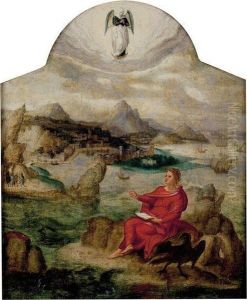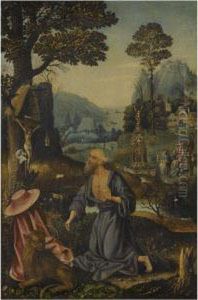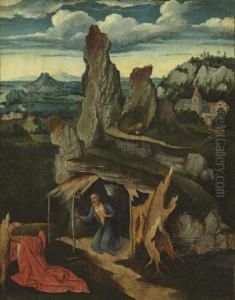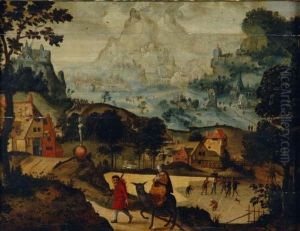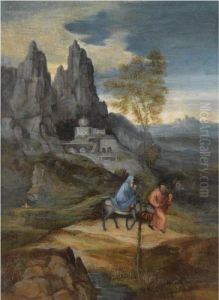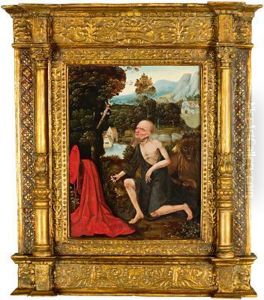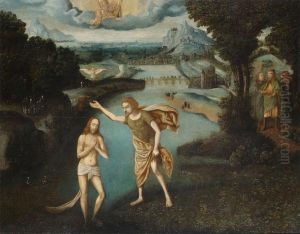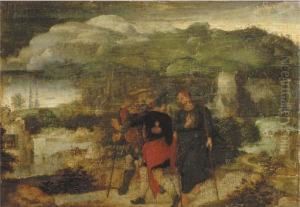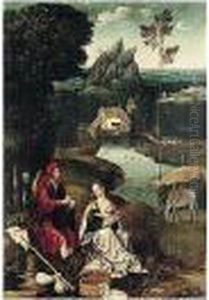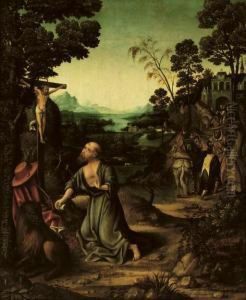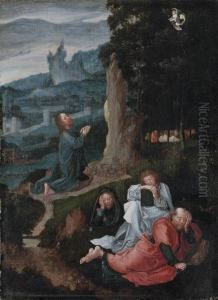Joachim Patenir Paintings
Joachim Patenir, also known as Joachim Patinir, was a Flemish painter who is credited with being one of the first artists to focus on landscape painting as an independent genre. Born around 1480 in Dinant or Bouvignes (present-day Belgium), Patenir's early life remains somewhat obscure. However, it is known that he became a master in the Antwerp painters' guild in 1515 and spent his career in Antwerp, a thriving center of art and commerce during the Northern Renaissance.
Patenir's contributions to art history are significant due to his pioneering role in landscape painting. Before his time, landscapes were usually relegated to the background of compositions. Patenir shifted the focus to the landscape itself, treating it as the primary subject. His works are characterized by panoramic views, vivid color palettes, and a keen observation of natural elements. He often incorporated biblical or mythological scenes into his landscapes but did so in a way that the narrative elements became secondary to the depiction of the natural world.
Although Patenir's oeuvre is relatively small, his landscapes had a considerable influence on subsequent generations of Northern European painters. His innovative approach to composition and his ability to create depth through the layering of color and detail were particularly admired. His landscapes also often featured a 'world landscape' motif, where elevated vantage points and sweeping vistas allowed viewers to see various parts of the world in a single glance.
Patenir collaborated with other artists as well, including Quentin Matsys, with whom he worked on the triptych 'The Temptation of St. Anthony.' His influence extended to artists like Albrecht Altdorfer and Pieter Bruegel the Elder, who would take the genre of landscape painting to new heights.
Joachim Patenir passed away in 1524 in Antwerp. Although his life was relatively short, his legacy as the 'father of landscape painting' has ensured his place in the annals of art history. His works can be found in several major museums, and he is remembered for his visionary approach to landscape art and for laying the groundwork for future generations of landscape artists.


